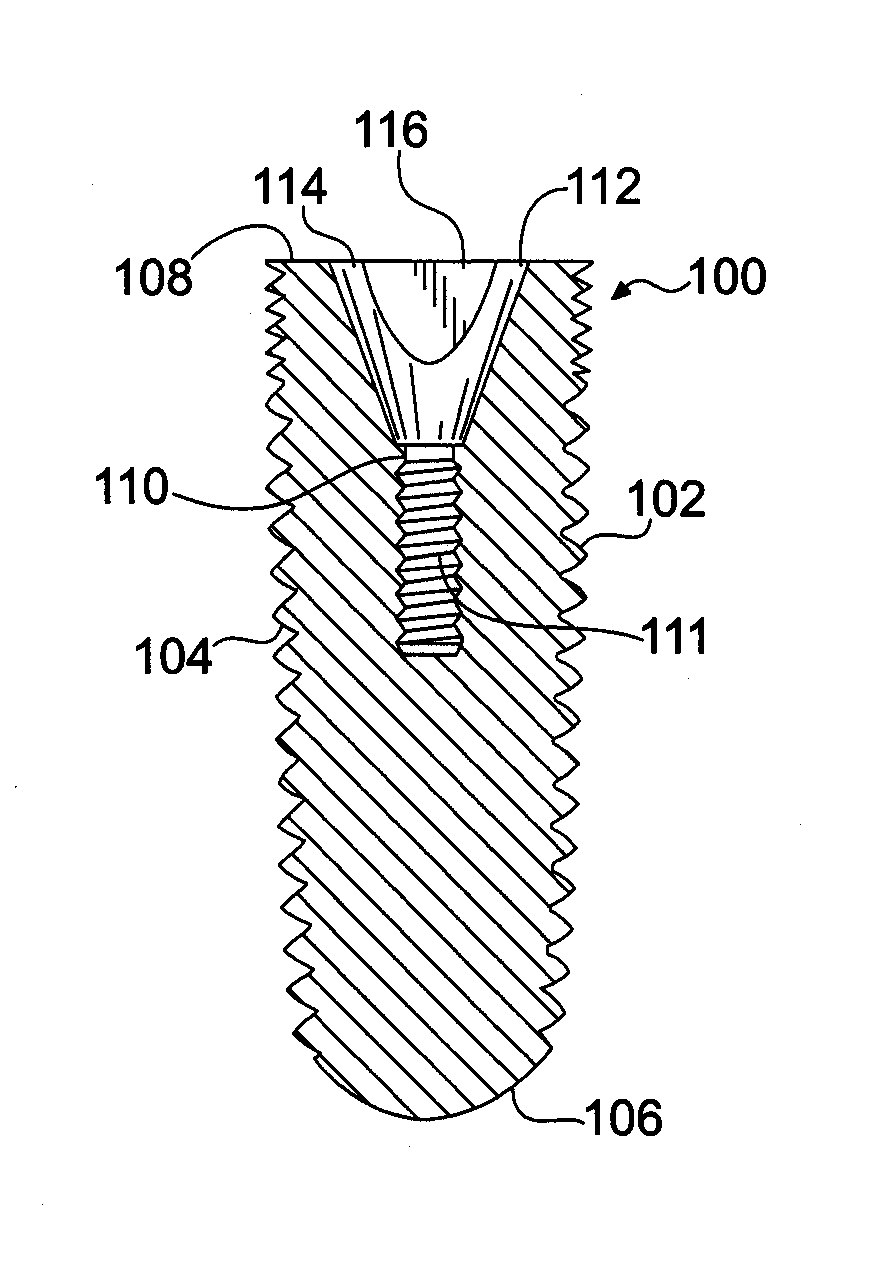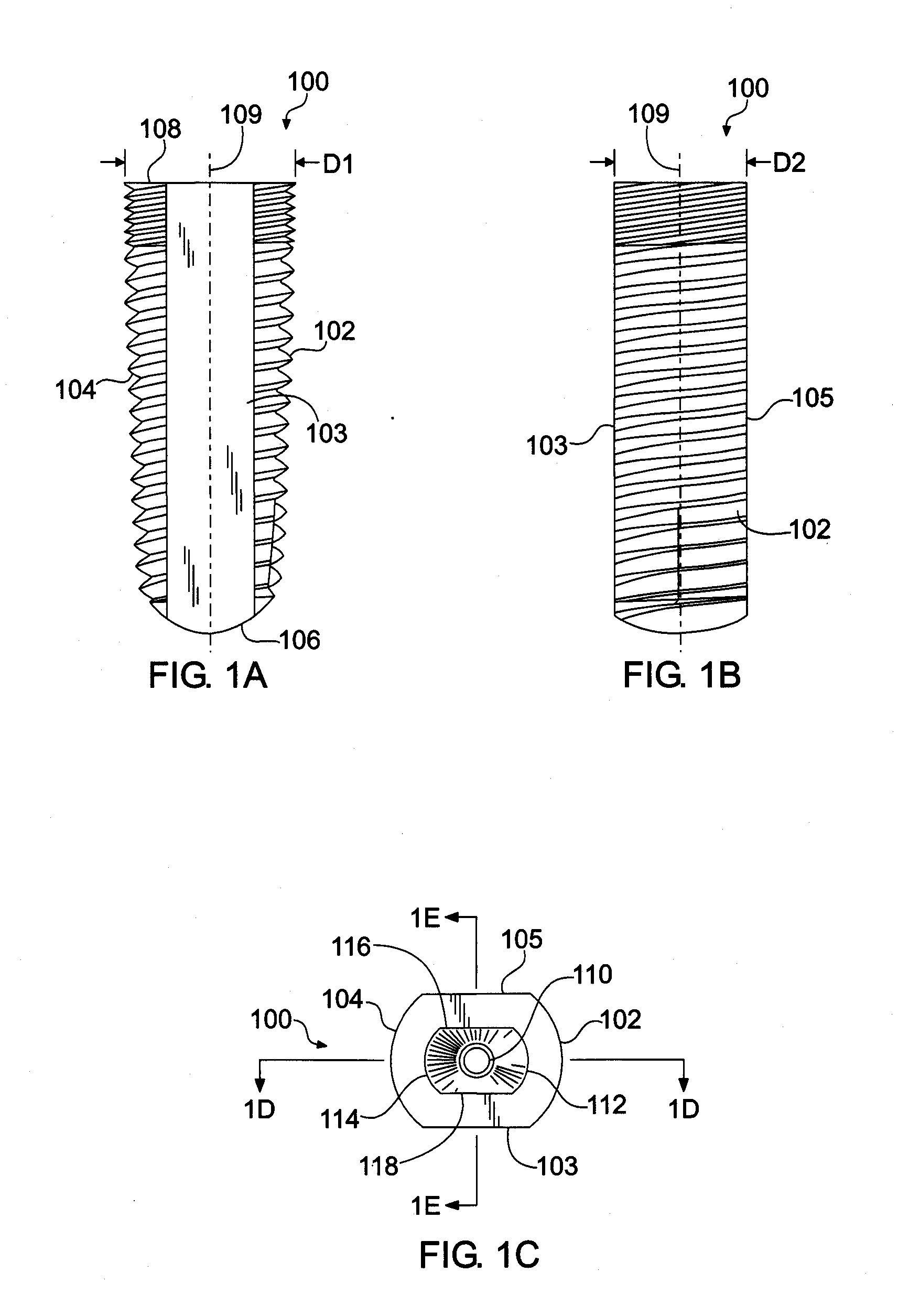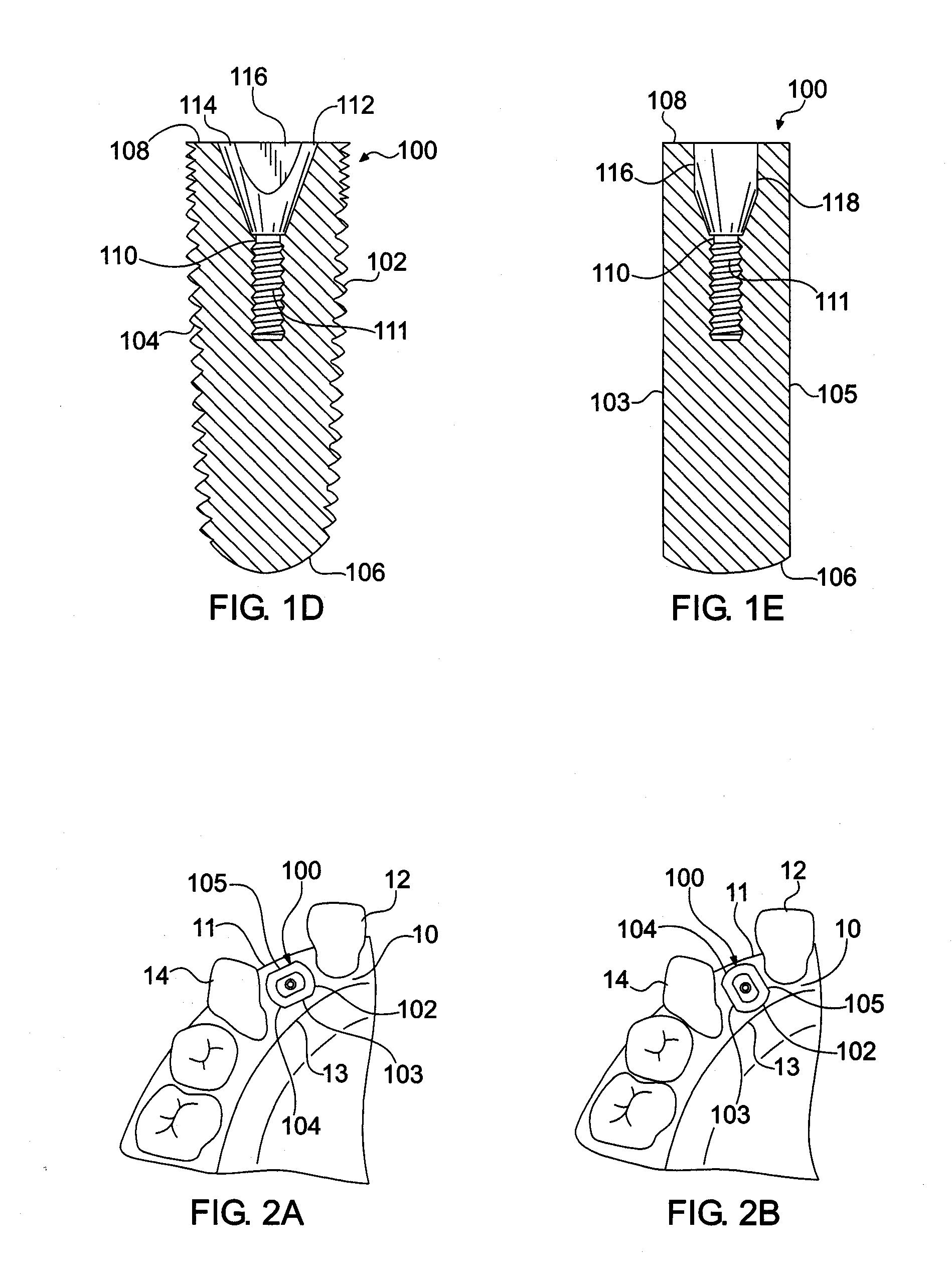Endosseous dental implant and abutment for prevention of bone loss
a technology of endosseous dental implants and abutments, which is applied in dental implants, dental surgery, medical science, etc., can solve the problems of reducing the affecting the treatment effect, so as to achieve the desired thickness of buccal bone and reduce the risk of bone loss. , the effect of preventing negative outcomes
- Summary
- Abstract
- Description
- Claims
- Application Information
AI Technical Summary
Benefits of technology
Problems solved by technology
Method used
Image
Examples
Embodiment Construction
[0018]Referring now to the figures, wherein like elements are numbered alike throughout, FIGS. 1A-1E schematically illustrate in exemplary configuration of an endosseous dental implant 100 in accordance with the present invention which is structured to deter or prevent tissue loss in a patient at the site of implantation. In this regard, the endosseous dental implant 100 may have a diameter D1 in a first selected direction perpendicular to the longitudinal axis 109 of the implant 100 and a relatively smaller diameter D2 in a second direction orthogonal to the first selected direction. Such a configuration has the benefit of providing increased implant stability in view of the relatively larger diameter D1 and decreased chance of tissue loss in view of the relatively smaller diameter D2 by providing increased clearance between selected surfaces 103, 105 of the implant 100 and the buccal and lingual surfaces 11, 13 of the bone tissue 10 into which the implant 100 is inserted, for exam...
PUM
 Login to View More
Login to View More Abstract
Description
Claims
Application Information
 Login to View More
Login to View More - R&D
- Intellectual Property
- Life Sciences
- Materials
- Tech Scout
- Unparalleled Data Quality
- Higher Quality Content
- 60% Fewer Hallucinations
Browse by: Latest US Patents, China's latest patents, Technical Efficacy Thesaurus, Application Domain, Technology Topic, Popular Technical Reports.
© 2025 PatSnap. All rights reserved.Legal|Privacy policy|Modern Slavery Act Transparency Statement|Sitemap|About US| Contact US: help@patsnap.com



